FAQ
- When a rule on a card refers to cards (or tokens) without specifying a player, it always refers to cards (or tokens) of the player to whom the card belongs – unless the text on the card specifically states differently.
Example: Richard has a Necklace on top of his ItemsPile , so during histurn he may remove one of his Monster Cards to get 7 Crystals. - If the text on a card doesn’t refer to a particular card (e.g. Top Item), the owner of the targeted cards may choose, which card will be affected.
Example: John took Bolas from the Journey Track and chose Ann to discard one of herMonsters . Ann has three Monsters : a Gnoll on the bottom of her pile, a Unicorn in the middle and a Manticore on top, so she chooses to discard the Unicorn, as it’s worth the least amount of GloryPoints . - All visible symbols, actions
and abilities are always active – this means that the artifacts are getting stronger and stronger throughout the game. - All hidden symbols, actions
and abilities are inactive – a card loses all its properties once it is covered up – apart from the ones beneath the bottom horizontal line. - The same Combat rules apply to fights against
Dragons , but keep in mind that some effects may only apply toMonsters , not to Dragons, and vice versa. - A Broken Sword icon means negative Attack Points, and a Broken Shield icon means negative Defense
Points . Players Attack and Defense Points can never go below zero. - If you are not sure how some more complicated cards are interacting one with another, check
big table of timing near the end of the instruction.
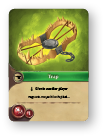
Trap: After taking this card from the Journey Track, the player must give this card to another player. The card is placed on top of the receiving player’s Item Card pile.
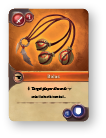
Bolas: After taking this card from the Journey Track, choose a player (yourself included). That player must discard one Monster Card of her choice from her own Monster Card pile. The discarded card doesn’t have to be the top card of the pile.
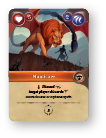
Manticore: After winning a fight with this
The player discards one of her own Monsters from her Monster Pile, before adding the Manticore to the pile. If the Manticore is his or her first Monster, she doesn’t have to discard anything.
The player chooses one of the other players; the target player must discard any one of her Monster Cards.
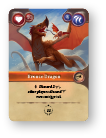
Bronze Dragon: Same as the Manticore rules above. Remember, the Dragon is not a Monster.

Roc: After defeating this Monster,
but before adding it to your Monster
Pile, choose a player. That player must give you a Monster of her choice from her own Monster Pile. Put that Monster on top of your Monsters
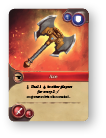
Consider raising your Attack Points, before taking an Axe.

of Fire: upon activation, the player receives an Attack Point for every Defense Point he or she has. His or her Defense Points remain at the same value.
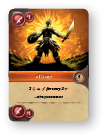
of Rage: upon activation, the player receives an Attack Point for every two Monsters he has.
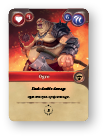
Ogre: double damage means that player receives twice the number of Wounds.
Example: Jack has 3 Defense and decides to take on an Ogre. Normally he would receive 3 Wounds, but since he’s fighting an Ogre, he is dealt 6 Wounds instead.
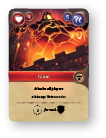
Giant: When a player fights this Monster, during the “Monster’s Attack” phase of the combat, resolve it for each player, one-by-one. Other players may NOT use any actions or effects during this attack (e.g. activate a Helmet). The number of Woundsdealt may differ between players. The “Player’s attack” phase goes by the standard rules.
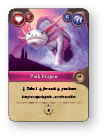
Pink Dragon: After winning a fight with this Dragon count the total number of Wounds you have. Then take the same number of Wound Markers from the general supply and add it to the Wounds you already have.
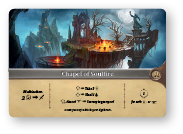
Chapel of Soulfire: Journey to graveyard means that you can treat a top discarded card as a proper journey destination. If it is an item or an enchantment, take it (activate abilities). If it is a Monster or a Dragon, you must first fight it (the same as if you had taken it from the Journey Track).
Note: the card removed from the Journey Track as part of a Rest action, is placed on the discard pile after the action is resolved.
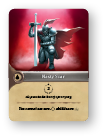
Nasty Scar: Nasty scar prevents you from using any minor action on Village Card. This includes the multiaction that allows you to up your attack. You can still use rest action on Village Card.
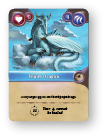
White Dragon: After getting White Dragon you or any other player will no longer be able to heal your wounds. They can still be transferred with abilities that state “give X of your Wounds to other players”.
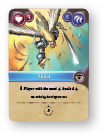
Angel: The healing is applied after the combat is resolved and so current player can get wounded and become the “player with most Wounds”.
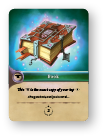
Book: The Book should be treated as an exact copy of the Enchantment – copies all the symbols, abilities and Glory Points. In addition it grants 2 Glory points at the end of the game.
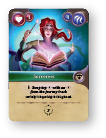
Sorceress: If there is no Enchantment on the Journey Track just ignore the ability.
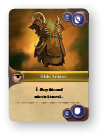
Hide Armor/Eye/of Acid: Upon taking these cards immediately put them at the bottom of an appropriate stacks.
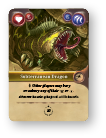
Subterranean Dragon: Each player in clockwise order can chose to bury or unbury any of their Items or spells. Those can be top, bottom or any other card. Only one such manipulation is allowed per player.

Skeleton: If there is no card in Graveyard just ignore this ability. Otherwise remember that the swap is mandatory.
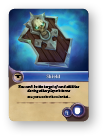
Shield: Other players that use or activate abilities that affect “another player”, “target player”, “player on your side” can’t pick you as a target and must pick another player. If there is no valid target for the ability just ignore the ability. If the the ability was a cost (i.e. “Another player heals 1 Wound) the cost is considered to not have been paid. For abilities affecting “all players” or “other players” activated by other players, ignore the effect that relates just to you. Note that the shield also blocks abilities that might be beneficial for you.
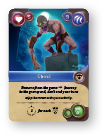
Ghoul/Of Death: Remove from the game means you must put the card in the box. That card can no longer enter play during this game.
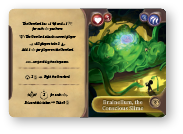
Brainellum: The easier way to understand the scoring on Brainellum is: 2/8/18/32/50 for 1/2/3/4/5 Reward tokens.
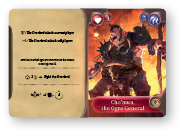
Cho’mun/Hydra: When an Overlord attacks all players resolve it for each player, one-by-one. Other players may NOT use any actions or effects during this attack (e.g. activate a Helmet). The number of Wounds dealt may differ between players. The “Player’s attack” phase is not resolved.
